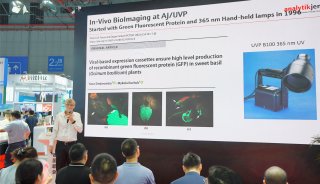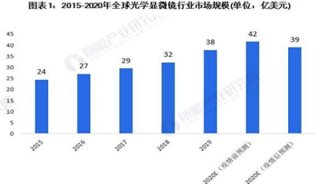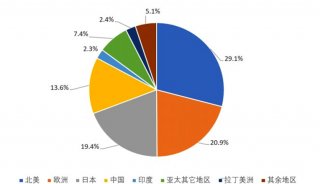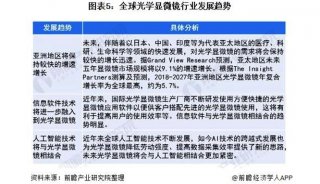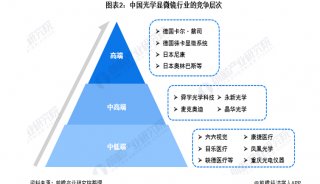活体动物体内光学成像(三)
(2) 免疫学与干细胞研究
将荧光素酶标记的造血干细胞移植入脾及骨髓,可用于实时观测活体动物体内干细胞造血过程的早期事件及动力学变化。有研究表明,应用带有生物发光标记基因的小鼠淋巴细胞,检测放射及化学药物治疗的效果,寻找在肿瘤骨髓转移及抗肿瘤免疫治疗中复杂的细胞机制。应用可见光活体成像原理标记细胞,建立动物模型,可有效的针对同一组动物进行连续的观察,节约动物样品数,同时能更快捷地得到免疫系统中病原的转移途径及抗性蛋白表达的改变。
(3) 细胞凋亡
当荧光素酶与抑制多肽以融合蛋白形式在哺乳动物细胞中表达,产生的融合蛋白无荧光素酶活性,细胞不能发光,而当细胞发生凋亡时,活化的caspase-3在特异识别位点切割去掉抑制蛋白,恢复荧光素酶活性,产生发光现象,由此可用于观察活体动物体内的细胞凋亡相关事件。也可以通过使用特殊的底物,DEVD-luciferin,当发生细胞凋亡时,活化的caspase-3会切断DEVD与luciferin的连接,恢复荧光素酶与luciferin的相互作用而发光。
2. 标记病毒
(1) 病毒侵染
以荧光素酶基因标记的HSV-1病毒为例,可观察到HSV-1病毒对肝脏、肺、脾及淋巴结的侵和病毒从血液系统进入神经系统的过程。多种病毒,腺病毒,腺相关病毒,慢病毒,乙肝病毒等,已被荧光素酶标记,用于观察病毒对机体的侵染过程。
(2) 基因治疗
基因治疗包括在体内将一个或多个感兴趣的基因及其产物安全而有效的传递到靶细胞。可应用荧光素酶基因作为报告基因用于载体的构建,观察目的基因是否能够在试验动物体内持续高效和组织特异性表达。这种非侵入方式具有容易准备、低毒性及轻微免疫反应的优点。荧光素酶基因也可以插入脂质体包裹的DNA分子中,
用来观察脂质体为载体的DNA运输和基因治疗情况。
Interrogating Androgen Receptor Function in Recurrent Prostate Cancer1,2
Liqun Zhang, Mai Johnson, Kim H. Le, Makoto Sato, Romyla Ilagan, Meera Iyer, Sanjiv S. Gambhir, Lily Wu, and Michael Carey3
Departments
of Biological Chemistry [L. Z., K. H. L., R. I., M. C.] and Urology [M.
J., M. S., L. W.], Crump Institute of Molecular Imaging [S. S. G., L.
W., M. C.], and Department of Molecular and Medical Pharmacology [M. I.,
S. S. G.], University of California, Los Angeles, School of Medicine,
Los Angeles, California 90095
ABSTRACT
The early
androgen-dependent (AD) phase of prostate cancer is dependent on the
androgen receptor (AR). However, it is unclear whether AR is fully
functional in recurrent prostate cancer after androgen withdrawal. To
address this issue we interrogated AR signaling in AD and recurrent
prostate cancer xenografts using molecular imaging, chromatin
immunoprecipitation, and immunohistochemistry. In the imaging
experiments, an adenovirus bearing a two-step transcriptional activation
cassette, which amplifies AR-dependent firefly luciferase reporter gene
activity, was injected into tumors implanted into severe combined
immunodeficiency mice. A charge-coupled device optical imaging system
detected the initial loss and then resumption of AR transcriptional
activity in D-luciferin-injected mice as tumors transitioned from AD to
recurrent growth. The results of chromatin immunoprecipitation and
immunohistochemical
localization experiments correlated with the Ad
two-step transcriptional activation imaging signal. AR localized to the
nucleus and bound to the endogenous prostate-specific antigen enhancer
in AD tumors but exited the nucleus and dissociated from the enhancer
upon castration. However, AR reentered the nucleus and rebound the
prostate-specific
antigen enhancer as the cancer transitioned into
the recurrent phase. Surprisingly, RNA polymerase II and the general
factor TFIIB remained bound to the gene throughout the transition. Our
data support the concept that AR is fully functional in recurrent cancer
and suggest a model by which a poised but largely inactive
transcription complex facilitates reactivation by AR at castrate levels
of ligand 
-
产品技术
